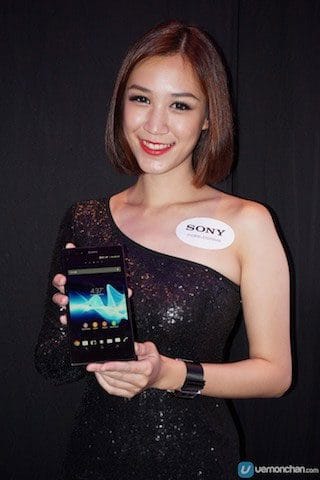I have been seriously underwhelmed with Apple lately and it seems to me that they’ve lost any momentum they might have and are currently on a one-way trip to dullsville. When it first hit the market there was nothing like the Apple iPhone. It had constant connectivity, it had no buttons, it had a great touchscreen UI and it had a brilliant system for creating and distributing software.
But since then all we’ve seen are minor iterative changes to that initial offering and it’s safe to say that no new announcement has quite created the same level of excitement.
But it’s not just Apple that are in my bad books. While other devices like the Xperia Z Ultra and the Note 3 might be a little more interesting, they still don’t exactly exhibit much in the way of imagination – they aren’t exactly breaking the mould.
In fact if you take size out of the equation and were to draw a picture of any of these devices it would be nearly impossible to tell them apart. Flat rectangular frame, big touchscreen, one to three buttons – job done. I remember using my XDA Exec – now that was a cool phone. Not only did it have a stylus, but it also looked like a laptop that you could open up and type on.
And when you wanted to take a call the screen would turn 30 degrees and pin back on itself to become a handheld PDA (yes like the Lenovo Yoga) and the whole thing glowed blue in the dark. This was over ten years ago and I was playing Tomb Raider on the impressive specs, and in general this was just an exciting phone.
When I got it out people would actually say ‘wow’ and there was nothing else like it. Now what options are there for someone who likes having unusual technology?
Future SmartPhones
The Future is Bright
But there is hope. Devices like the Note and the Xperia Z Ultra are at least showing signs that we’re moving away from the standard design and over time new technology is making new things possible.

With indie projects getting backing on Kickstarter, and tech firms starting to take more chances in other areas (such as the slate computer market) I expect we’ll start to see some more innovative devices hitting the shelves soon. But what will they look like, and more to the point, what should they look like?
Foldable Devices
One thing that’s certainly very interesting and worth watching out for are the new malleable displays that Samsung have been flaunting at tech shows. These screens can theoretically be folded up or bent backwards on themselves, and some devices are even showing how the screen might change shape to present bumps where keys are supposed to be or to provide brail for the blind.

These features are pretty awesome and it might not be long until we can fold up our phones to be a fraction of their full size. Not long, but not imminent either I’m afraid – as Samsung have stated that for the short term at least the technology will only be used to make screens more resilient and perhaps to show notifications on the sides.
Wearable Tech
Something that is quite interesting and quite spaceage to come from Samsung is their ‘Galaxy Gear’ which is a smartwatch that can work with the new Note 3. This allows you to view photos, record video and make calls via a watch that you can wear at all times.

Many other OEMs are looking into the use of smart watches too, and with Google Glass and other wearable augmented reality devices we might well start to see a world where we interact with our phones indirectly more and more often.
Keyboards
This is an area that’s definitely in the ‘want’ column. While there’s nothing to suggest that hardware keys are making a comeback (except perhaps for ‘Pressy’ on Kickstarter), I believe that there is still a demand for smartphones with keyboards.

The slow demise of the Blackberry has left a gap in the market and I know that my Step Dad would benefit from one with his huge fingers. And as a writer I’d appreciate a real way to input data on the move too. So please, someone?
Ubuntu
Something that we will see soon is Ubuntu on future smartphones. While the Ubuntu Edge failed to launch, the OS is still coming to mobile and this might start to bridge the gap between what PCs can do and what phones can do at last.

Because after all that’s where this is all heading, where it has always been heading: true convergence where you only need to own one device for everything. One device powered by the cloud and with a form factor that allows for full portability and full productivity.
 Tricks Window Technology Zone – Complete Technology Package for Technology News, Web Tricks, Blogging Tricks, SEO, Hacks, Network, Mobile Tricks, Android, Smartphones etc.
Tricks Window Technology Zone – Complete Technology Package for Technology News, Web Tricks, Blogging Tricks, SEO, Hacks, Network, Mobile Tricks, Android, Smartphones etc.



